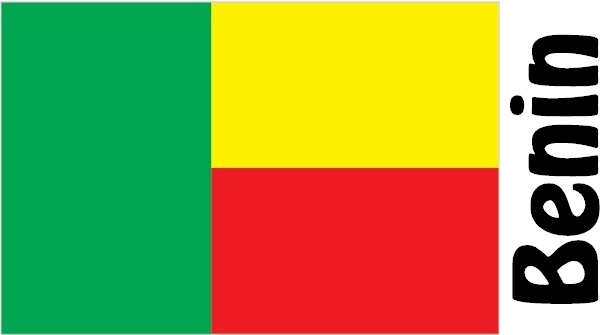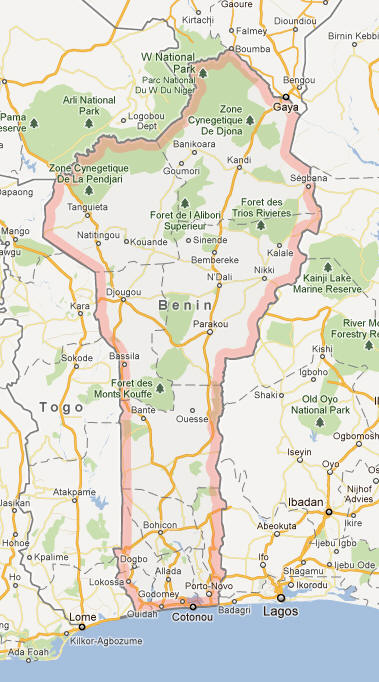Benin Facts
Benin, State of West Africa; 112 600 km², 11.5 million residents (2019.Benin borders north to Niger, east to Nigeria, west to Togo and northwest to Burkina Faso and has a coast to the Atlantic in the south. The capital is Porto-Novo (263 600 residents, 2014).

Country facts
- Republic of Benin / Republic of Benin
- Country abbreviation: BJ
- Area: 112 600 km²
- Population (2019): 11.5 million residents
- Capital: Porto-Novo
- Main languages: French, fon
- State: Republic
- Head of State and Head of Government: Patrice Talon (President)
- Per capita GDP (2018): US $ 902
- GNI per capita (2018): US $ 870
- Currency unit: 1 CFA franc = 100 centimes
- Currency code: XOF
- Country number (telephony): 229
- Internet domain name: bj
- Time difference compared to Sweden: 0
- National Day: August 1 (Independence Day, 1960)
Nature
- Land use: agricultural land (16%), other (84%)
- Highest mountain: Sokbaro (658 m asl)
Population
- Population density (2019): 102 residents per km²
- Natural population growth (2019): 3.3%; birth rate 42 ‰, death rate 9 ‰
- Age structure (2019): 0-14 years (43%), 15-64 (54%), 65- (3%)
- Average life expectancy (2019): men 60 years, women 63 years
- Infant mortality (2019): 55 per 1,000 live births
- Population forecast 2050: 28 million residents
- HDI (2017): 0.515 (place 163 of 189)
- Urbanization rate (2019): 45%
- Most populous cities (2014): Cotonou (678 900 residents), Porto-Novo (263 600 residents)
Business
- Industry’s contribution to GDP (2017): agriculture (26%), industry (23%), service (51%)
- Exports (2017): US $ 1 974 million
- Main export products: cotton, cashew nuts, textiles
- Main exporting countries: Bangladesh, India, Ukraine
- Imports (2017): US $ 2,787 million
- Main import products: food, capital goods, oil products
- Main importing countries: Thailand, India, France
- Railway network (2014): 440 km
Benin’s flat coastal area, closest to the Gulf of Benin and the Atlantic Ocean, is made up of sandy beaches and lagoons. Inside the coast are marshy marshes and clay plains. In the middle of the country lies the Benin Plateaus and in the northwest Atakorama massif, which is a continuation of the Togo Mountains. The average temperature is 25–28 °C.
The country, which became independent in 1960 under the name of Dahomey, is a parliamentary democracy. The executive power is held by a people-elected president who is elected for a term of five years and can be re-elected once. The President appoints the government and directs its work.
Benin’s business is strongly influenced by relations with Nigeria. The dependence has led to a dual business structure with a modern sector, comprising the state administration, industry and modern agriculture, and a more traditional sector, extensive self-sustaining agriculture and (illegal) border trade with Nigeria. Benin has an important role as a hub for regional trade, and the port of Cotonou serves as a port for the region. An extensive flood in 2010 hit the country’s important cotton cultivation hard, but thanks to foreign aid, the industry was able to recover quickly in the following years.
Benin Map














































